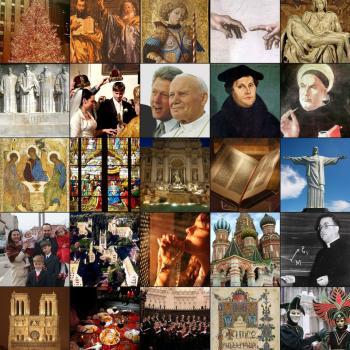 By Aaron Reeves
By Aaron Reeves
British Saints are frequently reminded of the significant contribution their converted ancestors made to the church. These narratives are an essential feature of contemporary expectations implied in some of the ‘prophetic' discourse of local and General leadership. Consequently, explosive growth can (and will) happen again; now, however, this surge is anticipated throughout Europe. Mauss, in a recent Dialogue article, has explored some of the explanations for these (currently) failed predictions and also tentatively examines the dynamics at work in the producing the future of Mormonism in Europe.
Mauss highlights three factors that could provide the context for the promised "second harvest." Firstly, he argues that the increasing secularization of Europe has created a group of potential converts among the spiritually non-traditional but well-educated. Assuming there is such a group (I am sceptical there is); what might they be like? Though they may be keen to experience their spirituality in and through a community, I am convinced that such groups are more fluid and malleable than would appeal to or benefit the LDS Church. One of the major costs of church membership for European Saints concerns time, especially as it pertains to "reactivation." Trying to seek out or engage with these non-traditional believers will possible only add to this pressure of high inactivity. In addition, Mauss believes the church's work to reduce stigma and political barriers in many European countries will be effective. The increasing political and financial power of the LDS Church will surely continue to break down the political and social barriers that congregations and individuals in some European countries currently face, especially if the Centre for Law and Religious Studies (CLRS) continues its work.
Finally, there is the possibility of creatively and locally adapting church doctrines that are not part of the core message. Mauss posits that if certain "Americanisms" can be played down, such as the divinity of the American constitution, then growth might follow. Yet, rather than play down such doctrines the church seems to be allowing some re-interpretation of these peripheral concepts. For example, a recent presentation by Cole Durham (CRLS) of BYU universalized these references to the U.S. constitution and argued that ‘Religious Freedom' is the divinity of any constitution. In this regard therefore, the church's message might be able to tolerate some re-appropriation in locally appealing ways.
However, I sense that this re-interpretation will be unimportant because the core message is still not significant for Europeans. Doctrines like tithing and the salvific importance of specific ordinances will inevitably work against the church in a non-traditional spiritual environment, let alone a secular one. The church would not be able to change enough of these core ideas and practices to be able to attract extended commitment from these non-traditional groups without compromising the majority (or a large proportion) of the current membership. Further, the fact that death-conquest, according to Douglas Davies, is a major source of the popularity of the church is a problem, for this is not something that has, historically speaking, been important in Western Europe. Thus if the ‘core' doctrines are unimportant to Europeans it seems unlikely that providing latitude for local re-interpretation of peripheral ideas will have any significant impact.
‘Real' growth in many European countries is either very low or practically non-existent and this is clearly a concern for church leaders. In a very big world, with a limited (and drastically reduced) missionary force, the responsibility for sharing the gospel is being increasingly focussed upon the local membership at the same time that increasing secularism and the ‘new' atheism is gaining normative and popular ground. The social costs of religiosity (especially for a peculiar church) are high indeed, especially among white natives. The places where missionaries are needed the most are those countries or continents where the social costs of sharing the gospel are highest. I do not think this shift will happen, but if the church wants to build strength in Western Europe it cannot rely alone upon the local membership.
The popularity of the church outside of Europe is also noticeable inside it due to conversions among immigrants. The outward spiritual ease of many of these non-European converts suggests that new members will increasingly be drawn from peoples comfortable with ‘preaching the gospel' with their friends and family (i.e., non-Europeans). This influx may create unanticipated challenges for a pre-dominantly white middle class leadership which, if handled badly, may cause disaffection. Increased cultural sensitivity and spiritual diversity might need to be encouraged if the Church is to retain these peoples. Though Mauss is optimistic, I am more sceptical. The newly globalised GA is a far cry from the parochial local Bishop or SP, and there will be increased tension between local and general leaders if cultural diversity is promoted to local groups who have already made cultural sacrifices during the Americanization of the 1970s-80s.




